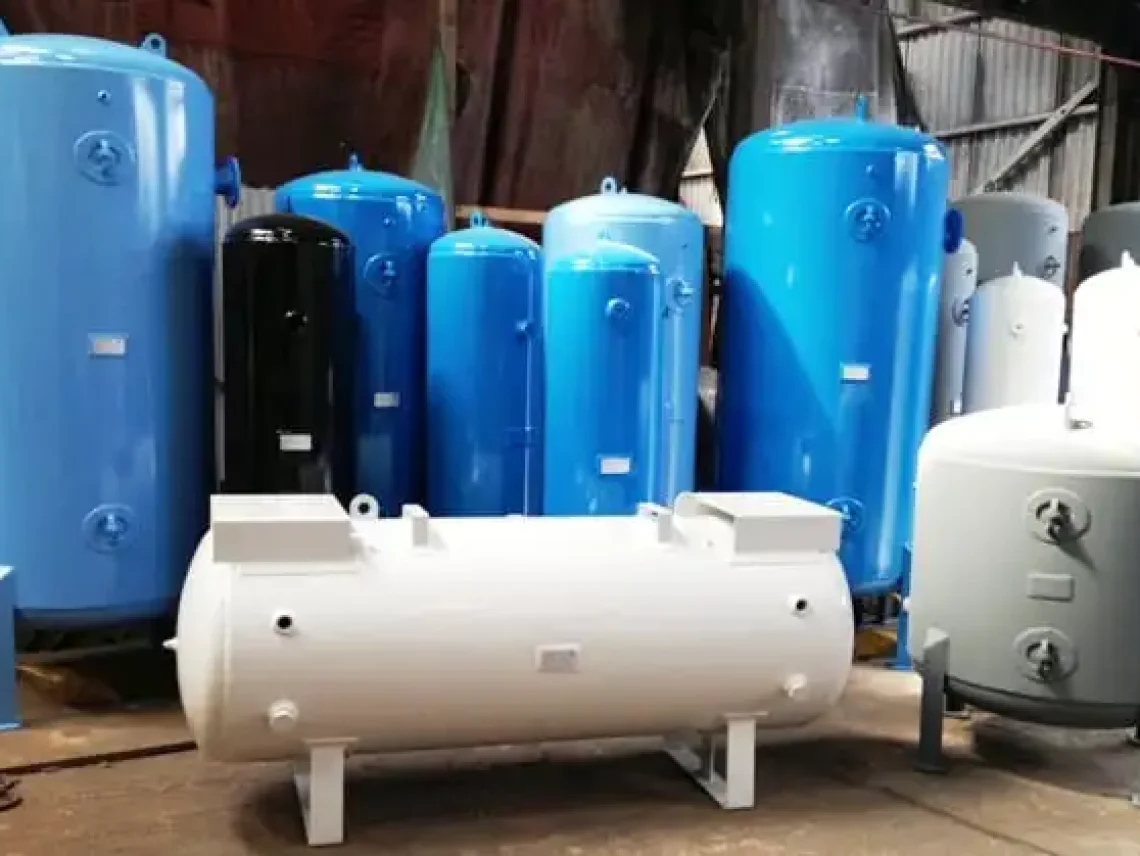Air Receiver Inspection Requirements

Table of Contents
ToggleIntroduction to Air Receiver Safety and Maintenance
Understanding the Role of Air Receivers in Industrial Applications
Air receivers play a critical role in various industrial applications, ranging from manufacturing to energy production. More specifically, they act as reservoirs for compressed air, ensuring that your systems operate smoothly and efficiently. At Red River, we recognize the pivotal role these components play in your operations. That is why we emphasize the importance of regular maintenance and inspection, helping you avoid unexpected disruptions and maintain peak efficiency.
The Importance of Regular Inspections for Air Receiver Safety
Regular inspections of air receivers are not just a regulatory requirement; rather, they are a fundamental aspect of operational safety. By ensuring that these vessels remain in top condition, businesses can prevent operational disruptions and, more importantly, safeguard their workers against potential hazards. At Red River, we prioritize your safety, embedding it deeply into our operational ethos so that your equipment remains reliable and compliant.
Overview of Legal and Safety Requirements for Air Receiver Inspection
Navigating the maze of legal and safety requirements for air receiver inspections can be daunting. However, strict adherence to these standards is crucial for both compliance and safety. Fortunately, our team at Red River is well-versed in national and state regulations, including ASME standards. By working with us, you can confidently meet these requirements while maintaining operational efficiency.
Frequency of Air Receiver Inspections
Recommended Inspection Intervals for Optimal Safety
How often should air receivers be inspected? The answer depends on several factors, including the operating environment and the condition of the equipment. Generally, inspections should be conducted annually at a minimum. However, under high-use conditions, more frequent checks may be necessary to ensure continued reliability. At Red River, we can help you determine the optimal inspection schedule based on your specific needs, providing you with peace of mind and operational security.
Factors Influencing Inspection Frequency
Several factors influence how frequently air receivers need to be inspected. These include the age of the equipment, usage intensity, and environmental conditions. Understanding these factors can help you maintain your equipment more effectively, ensuring reliability and safety.
Comparison of Inspection Schedules Across Different Industries
Inspection schedules can vary significantly across different industries. For example, air receivers in oil and gas operations may require more frequent checks compared to those used in commercial settings due to the harsh operational conditions. Red River LLC’s experience across diverse industries enables us to provide tailored advice that meets your unique needs.
Need a reliable partner?
FAQ: Air Receiver Inspections
What are the consequences of not regularly inspecting air receivers?
Failing to inspect air receivers regularly can lead to several severe consequences. The most critical is the risk of catastrophic failure, which can cause injuries or even fatalities. Additionally, neglecting inspections can result in operational inefficiencies, increased energy consumption, and higher maintenance costs over time. It may also lead to legal liabilities and penalties if the equipment does not comply with safety regulations.
Can air receivers fail if they pass all inspections?
Yes, even air receivers that pass inspections can fail, although this is rare when inspections are thorough and carried out regularly. Failures can occur due to unforeseen factors like sudden material fatigue, operational misuse, or extreme environmental conditions. Regular monitoring and adhering to operational guidelines are crucial in minimizing these risks.
How can environmental conditions affect air receivers?
Environmental conditions significantly impact air receivers, particularly in terms of corrosion and material degradation. High humidity levels can accelerate rusting, while extreme temperatures can stress the materials, leading to cracks or structural weaknesses. It’s vital to consider these factors when planning the placement and maintenance schedule of air receivers.
What is the difference between internal and external inspections for air receivers?
Internal inspections focus on checking the inside of the air receiver for signs of corrosion, accumulation of moisture, or any other internal damage that could compromise its integrity. External inspections are concerned with the outer surface, checking for leaks, rust, and structural deformities. Both types of inspections are crucial for comprehensive maintenance and safety checks.
Are there any specific technologies used in air receiver inspections?
Advanced technologies, such as ultrasonic testing (UT), magnetic particle testing (MPT), and radiographic testing (RT), are commonly used in air receiver inspections. These technologies help in detecting hidden flaws, such as micro-cracks or internal corrosion, that are not visible to the naked eye. Employing such technologies enhances the accuracy and reliability of the inspections, ensuring that the air receivers are safe and functional.
Table of Contents
ToggleRelated Blog Post
- What is a vertical air receiver?
- Do air compressors run out of air?
- Where are Senco compressors made?
- How do I choose an air receiver tank?
- Where are westair compressors made?
- What material is used for air receivers?
- What air compressors are made in the US?
- Where are Eaton air compressors made?
- What is an air compressor with air receiver?
- How do you size a compressed air receiver tank?
- What is the difference between an air tank and a compressor?
Solutions
In the realm of industrial solutions, Red River emerges as a pioneer, offering a diverse range of custom-engineered products and facilities. Among our specialties is the design and production of Custom/OEM Pressure Vessels, meticulously crafted to meet individual client requirements, ensuring performance under various pressure conditions. Our expertise extends to the domain of prefabrication, where Red River leads with distinction.
The company excels in creating prefabricated facilities, modules, and packages, reinforcing its stance as a forerunner in innovation and quality. This proficiency is further mirrored in their Modular Skids offering, where they provide an array of Modular Fabricated Skid Packages and Packaged equipment. Each piece is tailored to client specifications, underlining their commitment to delivering precision and excellence in every project they undertake.
